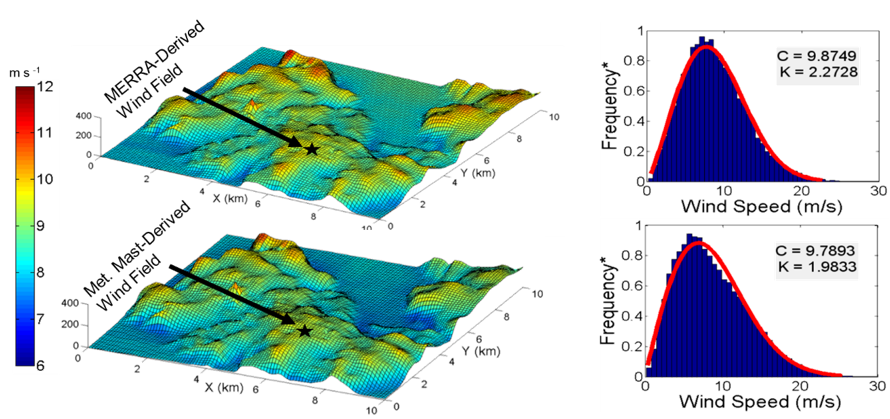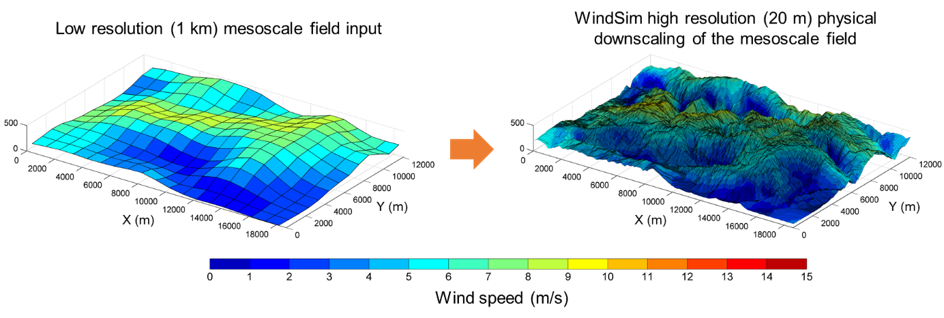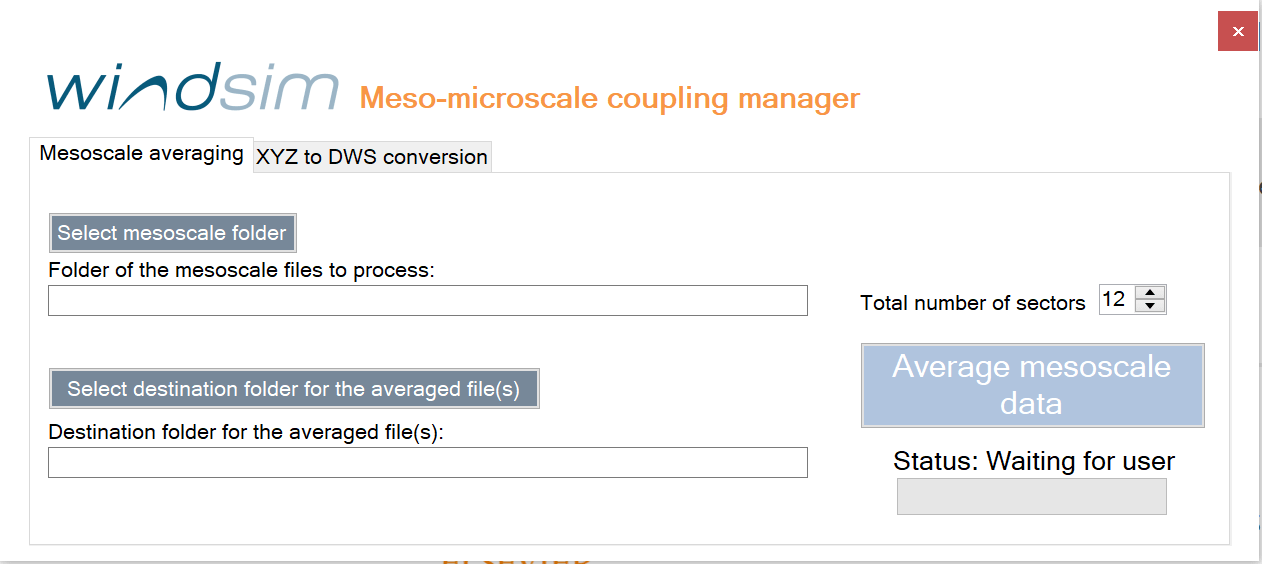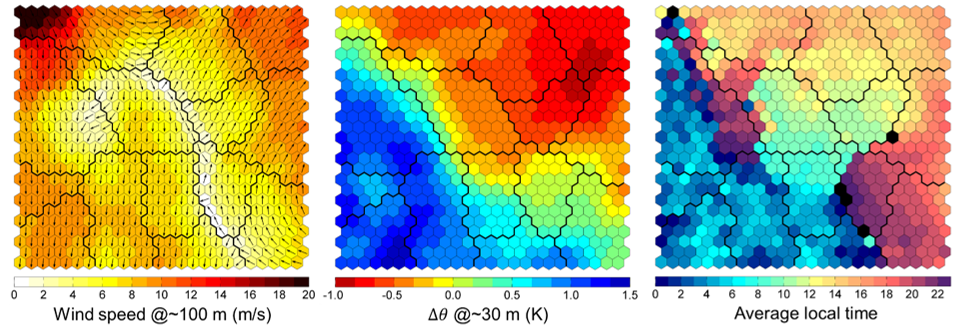meso- micro coupling
Today’s mesoscale meteorological models are richer and deliver data in higher resolution than ever before. WindSim will help you leverage these advances.
WindSim provides you with different tools depending on the type of mesoscale datasets available and the needs of your project.
Point-like Mesoscale Data Assimilation
In WindSim 11 you can assimilate mesoscale wind data as a climatological input. This allows you to conduct site assessments without the need of meteorological masts, while including the long-term wind conditions.

Thanks to our CFD technology, WindSim is suitable to find the high wind locations produced by complex orography.
Features:
- Better detection of high wind spots than most screening tools
- Measurement-free wind resource assessment
- Inclusion of long-term wind conditions
Physical Mesoscale Downscaling
WindSim 11 allows you to physically downscale mesoscale 3-D wind fields. It derives the local wind conditions from the mesoscale (like atmospheric stability, wind shear and wind veer) and enhance them with our CFD technology.


Physical mesoscale downscaling delivers you the following advantages:
- Simulation of realistic atmospheric flow conditions
- Consideration of atmospheric stratification in 3-D
- Simulation of mesoscale phenomena like low-level jets and wind turning
- Procedure to calculate AEP
- Applicable without onsite measurements
Additional features:
- Support for the Weather Research and Forecasting (WRF) and other meteorological models
- Applicable for forecasting
- User friendly interface
For further technical information, we invite you to check our published scientific article here.
WindSim has developed a sophisticated weather classification tool based on machine learning. In a fully automated manner, you can obtain the most predominant weather patterns occurring at your site. These patterns can be then downscaled using WindSim’s meso-microscale coupling technology. This approach is especially advantageous for sites with marked diurnal cycles and unidirectional wind.

WindSim currently provide the consulting service for wind resource assessment and screening utilizing this advanced meso microscale coupling approach.
Features:
- Procedure to calculate AEP
- Advantageous for sites marked diurnal cycles and unidirectional wind
- Wind resource assessment and AEP estimations based on the predominant weather patterns
- Applicable without onsite measurements
- Fully automated obtention of the main wind conditions at your site
- Detection of main stability conditions
